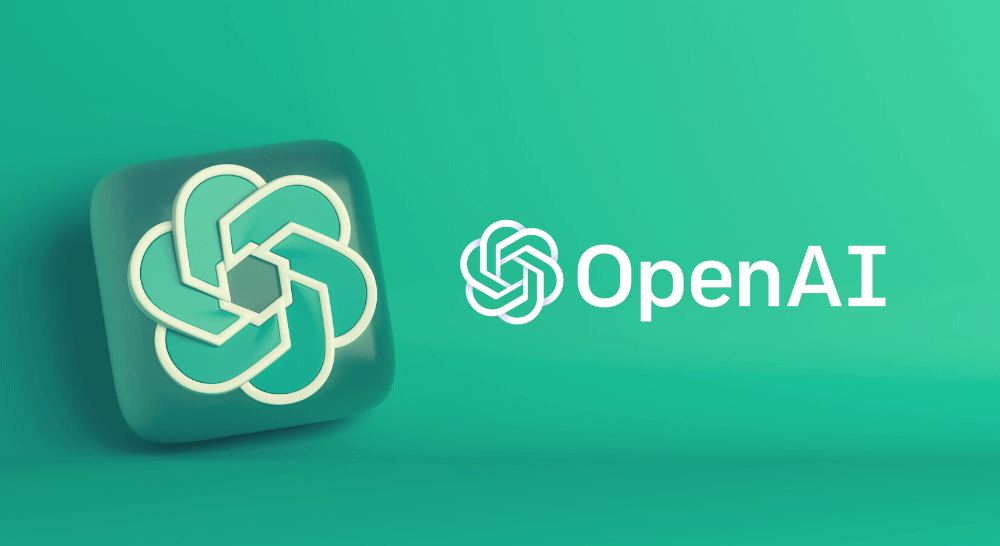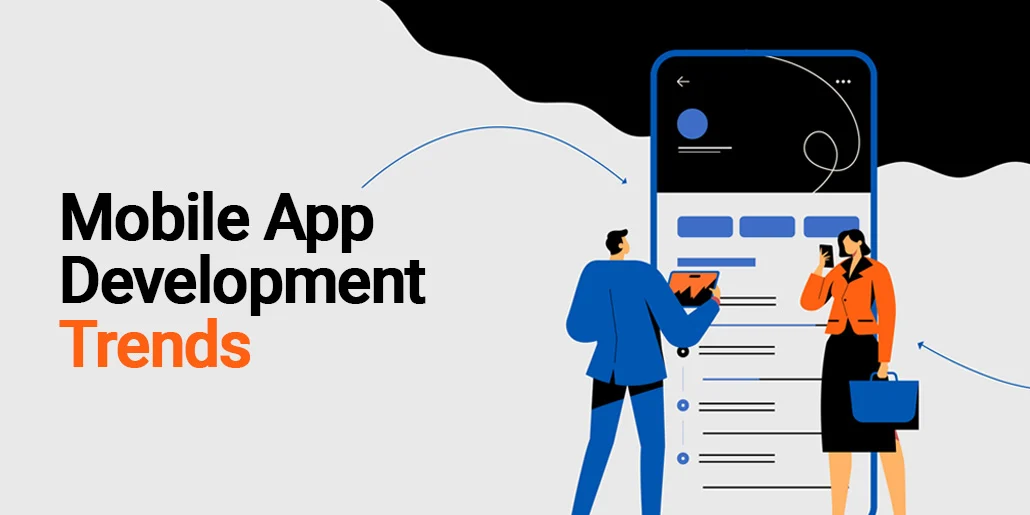
Mobile app development is an ever-evolving landscape, constantly influenced by emerging technologies and shifting user preferences. As we step into 2024, let’s delve into the top 10 trends shaping the future of mobile app development.
1. Artificial Intelligence Integration
Artificial Intelligence (AI) continues to be at the forefront of mobile app development, enabling advanced features such as personalized recommendations, natural language processing, and predictive analytics. In 2024, we can expect a surge in AI-powered mobile apps that deliver enhanced user experiences and increased efficiency.
Artificial Intelligence (AI) integration is a pivotal trend shaping the landscape of technology and business. It involves the incorporation of AI-powered algorithms and systems into various applications and processes to enhance efficiency, automate tasks, and derive valuable insights from data.
In recent years, AI integration has gained significant momentum across industries, revolutionizing how businesses operate and interact with customers. From predictive analytics and personalized recommendations to natural language processing and image recognition, AI-driven capabilities are transforming traditional business models and driving innovation at unprecedented rates.
In the realm of mobile app development, AI integration is particularly impactful. Developers are harnessing the power of AI to create smarter, more intuitive apps that can understand user behavior, anticipate needs, and deliver personalized experiences. Whether it’s chatbots providing customer support, virtual assistants streamlining tasks, or recommendation engines suggesting relevant content, AI-powered features are becoming increasingly ubiquitous in mobile apps.
Moreover, AI integration extends beyond user-facing functionalities to backend processes and infrastructure. AI algorithms can optimize resource allocation, automate routine tasks, and improve system performance, resulting in faster, more efficient app experiences. Additionally, AI-driven analytics enable developers to gain valuable insights into user preferences, market trends, and performance metrics, facilitating data-driven decision-making and continuous improvement.
As AI technologies continue to evolve and mature, the possibilities for integration in mobile apps are virtually limitless. From machine learning and natural language processing to computer vision and robotic process automation, the breadth and depth of AI capabilities offer endless opportunities for innovation and differentiation in the competitive app market.
2. Augmented Reality (AR) Experiences
Augmented Reality (AR) is gaining momentum in mobile app development, offering immersive experiences that blend digital content with the real world. From AR-powered navigation apps to interactive gaming experiences, developers are leveraging AR technology to create engaging and innovative mobile apps.
Augmented Reality (AR) experiences are reshaping the way we interact with digital content, blending virtual elements seamlessly into the real world. AR technology overlays computer-generated imagery onto the user’s view of the physical environment, enhancing perception and interaction in various contexts.
In recent years, AR experiences have gained popularity across a wide range of industries, from gaming and entertainment to education, retail, and beyond. Mobile apps leveraging AR technology offer users immersive and interactive experiences that bridge the gap between the digital and physical worlds.
One of the most notable applications of AR experiences is in gaming, where players can engage in augmented reality games that superimpose virtual objects and characters onto the real world. These games encourage users to explore their surroundings, interact with virtual elements, and collaborate with other players in shared augmented spaces.
In addition to gaming, AR experiences are increasingly being used in education to enhance learning and engagement. Educational apps leverage AR technology to provide interactive simulations, virtual field trips, and immersive storytelling experiences that bring abstract concepts to life and make learning more engaging and memorable.
Retail is another industry where AR experiences are making waves, offering customers virtual try-on experiences, interactive product demonstrations, and immersive shopping experiences. By allowing users to visualize products in their environment before making a purchase, AR technology enhances the shopping experience and reduces the likelihood of returns.
Moreover, AR experiences are being utilized in marketing and advertising to create interactive and engaging campaigns that capture the attention of consumers. AR-powered advertisements allow users to interact with branded content in real time, driving engagement and brand awareness in ways that traditional advertising cannot.
As AR technology continues to evolve and become more accessible, the potential for AR experiences in mobile apps is virtually limitless. From enhancing productivity and collaboration in the workplace to revolutionizing healthcare, architecture, and beyond, AR has the power to transform how we perceive and interact with the world around us.
3. Internet of Things (IoT) Integration
The Internet of Things (IoT) is driving connectivity beyond smartphones, with an increasing number of devices and sensors being integrated into mobile apps. In 2024, we’ll see a rise in IoT-enabled mobile apps that control smart home devices, monitor health metrics, and optimize industrial processes, among other applications.
Internet of Things (IoT) integration is revolutionizing the way devices and systems communicate and interact with each other, leading to a more connected and efficient world. IoT technology enables everyday objects, from household appliances to industrial machinery, to collect, exchange, and act on data, transforming how we live, work, and interact with our environment.
In recent years, IoT integration has become increasingly prevalent across various industries, driving innovation and optimization in sectors such as healthcare, manufacturing, transportation, and smart cities. Mobile apps play a crucial role in IoT integration, serving as interfaces that allow users to monitor, control, and interact with IoT-enabled devices and systems from their smartphones or tablets.
One of the key applications of IoT integration in mobile apps is in the realm of smart home technology. IoT-enabled devices such as smart thermostats, lighting systems, security cameras, and appliances can be controlled remotely via mobile apps, allowing users to manage their homes’ energy usage, security, and comfort with ease.
In addition to smart homes, IoT integration is transforming healthcare delivery through remote patient monitoring and telemedicine solutions. Mobile apps equipped with IoT sensors can collect real-time health data from patients, such as vital signs and medication adherence, and transmit it to healthcare providers for analysis and intervention, improving patient outcomes and reducing healthcare costs.
IoT integration is also revolutionizing the manufacturing industry by enabling the implementation of smart factories and predictive maintenance solutions. Mobile apps connected to IoT-enabled sensors and machinery allow factory managers to monitor production processes in real time, optimize resource allocation, and detect potential equipment failures before they occur, minimizing downtime and maximizing efficiency.
Furthermore, IoT integration is driving innovation in transportation and logistics, with mobile apps providing real-time tracking and monitoring of vehicles, shipments, and assets. IoT-enabled sensors and GPS technology allow logistics companies to optimize route planning, improve delivery accuracy, and enhance overall supply chain visibility and efficiency.
As IoT technology continues to evolve and become more pervasive, the potential for IoT integration in mobile apps is limitless. From smart cities and agriculture to retail and hospitality, IoT-enabled mobile apps have the power to transform industries, improve quality of life, and create new opportunities for innovation and growth.
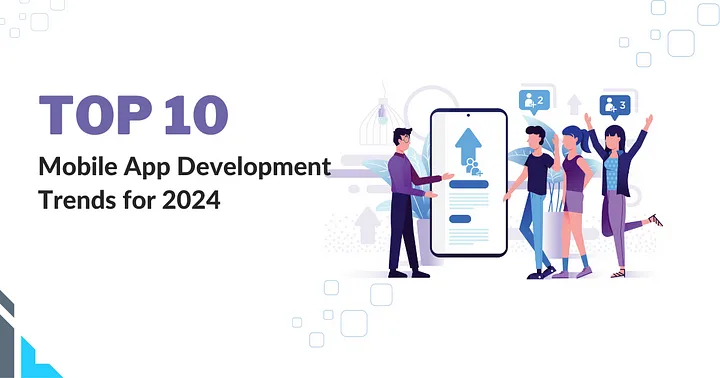
4. Voice-Enabled Interfaces
Voice-enabled interfaces are becoming more prevalent in mobile app development, allowing users to interact with apps using voice commands. As natural language processing technology advances, voice-enabled apps will offer greater accuracy and functionality, catering to users’ preference for hands-free interaction.
Voice-enabled interfaces are revolutionizing the way users interact with technology, offering hands-free and intuitive methods of communication. With the proliferation of smart speakers, virtual assistants, and voice recognition technology, voice-enabled interfaces have become increasingly prevalent across a wide range of devices and applications.
In recent years, voice-enabled interfaces have gained significant traction in mobile app development, providing users with an alternative means of interacting with their smartphones and tablets. Voice-activated commands allow users to perform various tasks, such as sending messages, making calls, setting reminders, and controlling smart home devices simply by speaking to their devices.
One of the key advantages of voice-enabled interfaces is their accessibility and convenience. Voice commands eliminate the need for users to type or navigate through complex menus, making it easier for individuals with disabilities or mobility impairments to use mobile apps. Additionally, voice-enabled interfaces allow users to interact with their devices hands-free, making them ideal for situations where manual input may be impractical or unsafe, such as driving or cooking.
Moreover, voice-enabled interfaces are becoming increasingly sophisticated, thanks to advancements in natural language processing (NLP) and machine learning algorithms. Virtual assistants like Siri, Google Assistant, and Amazon Alexa can understand and interpret complex commands, learn from user interactions, and provide personalized responses and recommendations, enhancing the overall user experience.
In addition to improving accessibility and convenience, voice-enabled interfaces are also driving innovation in industries such as healthcare, retail, and hospitality. Mobile apps equipped with voice recognition technology enable healthcare providers to access patient records, input clinical notes, and dictate prescriptions hands-free, improving efficiency and accuracy in patient care. In retail, voice-enabled interfaces can facilitate personalized shopping experiences, allowing customers to search for products, place orders, and receive recommendations using voice commands. Similarly, in the hospitality industry, voice-activated hotel apps can enable guests to control room amenities, request services, and access information about local attractions using voice commands, enhancing their overall stay experience.
As voice-enabled interfaces continue to evolve and improve, the potential for innovation in mobile app development is limitless. From enhancing accessibility and convenience to driving efficiency and personalization, voice-enabled interfaces have the power to transform the way we interact with technology and enrich our daily lives.
5. 5G Optimization
The rollout of 5G networks is set to revolutionize mobile app development, offering faster speeds, lower latency, and increased bandwidth. In 2024, developers will prioritize 5G optimization to deliver high-performance apps that leverage the full potential of next-generation network capabilities.
5G optimization is reshaping the landscape of mobile app development, unlocking new opportunities for innovation, connectivity, and speed. As the fifth generation of wireless technology, 5G offers significant improvements over its predecessors, including faster download and upload speeds, lower latency, and greater network capacity.
In recent years, 5G optimization has become a top priority for mobile app developers as businesses and consumers alike seek to leverage the full potential of next-generation network capabilities. By optimizing mobile apps for 5G networks, developers can deliver enhanced performance, improved user experiences, and innovative features that were previously not possible.
One of the key benefits of 5G optimization is faster download and upload speeds, which enable users to access and interact with content more quickly and seamlessly. Mobile apps optimized for 5G networks can deliver high-resolution multimedia content, such as videos, images, and virtual reality experiences, with minimal buffering or lag, providing users with a smoother and more immersive experience.
Moreover, 5G optimization reduces latency, or the delay between sending and receiving data packets, which is crucial for real-time applications such as gaming, video streaming, and video conferencing. With lower latency, mobile apps can respond to user inputs more quickly, providing a more responsive and interactive user experience.
Furthermore, 5G optimization enables developers to take advantage of greater network capacity, allowing for the simultaneous connection of more devices and the transfer of larger amounts of data. This opens up new possibilities for IoT applications, smart city initiatives, and other use cases that require high-bandwidth, low-latency connectivity.
In addition to improving performance and user experiences, 5G optimization also presents opportunities for innovation in mobile app development. Developers can create new types of applications and services that leverage the speed, reliability, and low latency of 5G networks, such as augmented reality gaming, remote healthcare monitoring, and autonomous vehicle navigation.
As 5G technology continues to roll out and become more widely available, the demand for 5G-optimized mobile apps will only continue to grow. Businesses that prioritize 5G optimization in their mobile app development efforts will be well-positioned to capitalize on the benefits of next-generation connectivity and deliver superior experiences to their users.
6. Progressive Web Apps (PWAs)
Progressive Web Apps (PWAs) are gaining traction as a cost-effective alternative to native mobile apps, offering cross-platform compatibility and improved performance. In 2024, we’ll see an increase in PWAs that deliver app-like experiences directly through web browsers, driving greater accessibility and user engagement.
Progressive Web Apps (PWAs) are a groundbreaking approach to web development that combines the best features of traditional web pages with the functionality of mobile apps. PWAs offer users an app-like experience directly through web browsers, eliminating the need for separate installations from app stores.
In recent years, PWAs have gained significant traction in mobile app development, offering a cost-effective and efficient alternative to native mobile apps. By leveraging modern web technologies such as Service Workers, Web App Manifests, and responsive design principles, developers can create PWAs that deliver fast performance, offline capabilities, and seamless user experiences across devices and platforms.
One of the key advantages of PWAs is their ability to work offline or with limited connectivity, thanks to the use of Service Workers. Service Workers are JavaScript files that run in the background of the browser and can cache resources, such as HTML, CSS, and JavaScript files, allowing PWAs to load instantly and remain functional even in offline mode.
Moreover, PWAs can be installed directly from the browser onto the user’s device, creating an app-like experience without the need for app store downloads or updates. Once installed, PWAs can be accessed from the device’s home screen, launched with a single tap, and run in a standalone window without the browser Chrome, providing users with a native-like experience.
Furthermore, PWAs are responsive by design, meaning they adapt seamlessly to different screen sizes and orientations, making them ideal for a wide range of devices, from smartphones and tablets to desktop computers and laptops. This responsiveness ensures that users receive a consistent and optimized experience regardless of the device they are using.
In addition to their technical advantages, PWAs offer numerous benefits for businesses and developers. PWAs are cost-effective to develop and maintain compared to native mobile apps, as they can be built using standard web technologies and shared across multiple platforms. Moreover, PWAs can improve user engagement and retention, as they offer fast performance, offline capabilities, and frictionless installation, leading to higher conversion rates and lower bounce rates.
As PWAs continue to evolve and gain widespread adoption, they are poised to become the future of mobile app development. By combining the reach and accessibility of the web with the functionality and engagement of native mobile apps, PWAs offer a compelling solution for businesses looking to deliver superior user experiences in an increasingly mobile-first world.
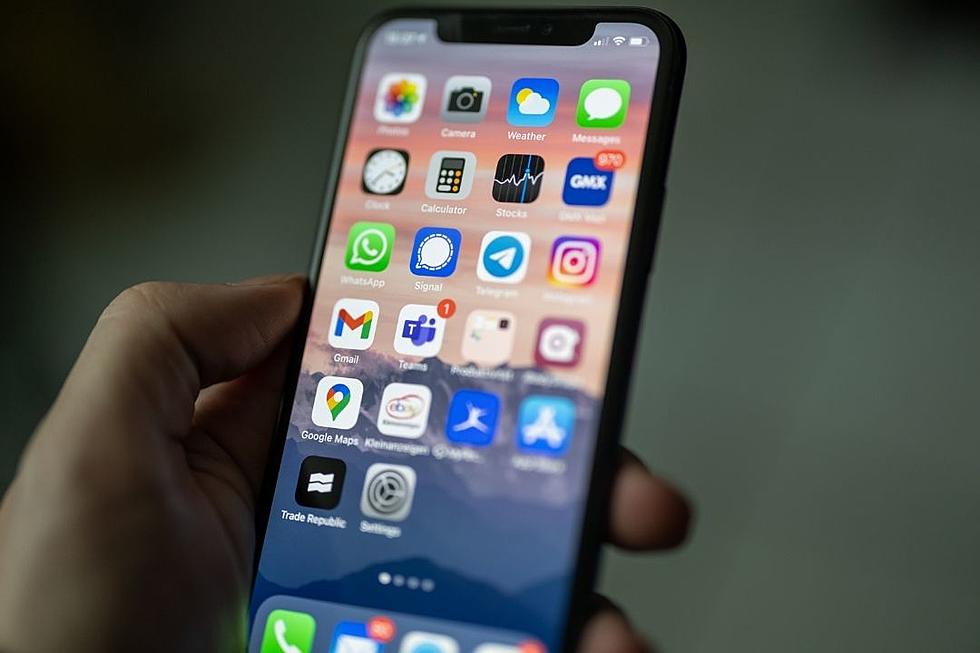
7. Blockchain Integration
Blockchain technology is disrupting various industries, and mobile app development is no exception. In 2024, we can expect to see more mobile apps leveraging blockchain for secure transactions, digital identity verification, and decentralized applications (DApps), offering enhanced security and transparency to users.
Blockchain integration is revolutionizing the way businesses and organizations manage and secure digital transactions, data, and assets. Blockchain technology, originally developed as the underlying technology behind cryptocurrencies like Bitcoin, is a decentralized and distributed ledger system that records transactions across a network of computers in a secure and immutable manner.
In recent years, blockchain integration has expanded beyond cryptocurrencies to encompass a wide range of industries and use cases, from finance and supply chain management to healthcare, real estate, and beyond. By leveraging blockchain technology, businesses can enhance security, transparency, and efficiency in various aspects of their operations.
One of the key benefits of blockchain integration is enhanced security. The decentralized nature of blockchain technology means that data is stored across multiple nodes in the network, making it extremely difficult for hackers to compromise or alter the data. Additionally, transactions recorded on the blockchain are encrypted and linked to previous transactions, creating a tamper-proof and auditable record of activity.
Moreover, blockchain integration improves transparency and accountability by providing a shared and immutable ledger that can be accessed and verified by all parties involved in a transaction. This transparency reduces the risk of fraud and dispute, as all participants have access to the same information and can trust the integrity of the data recorded on the blockchain.
Furthermore, blockchain integration enables more efficient and streamlined processes by eliminating the need for intermediaries and reducing the time and cost associated with traditional transaction methods. Smart contracts, self-executing contracts with the terms of the agreement written into code, automate and enforce the terms of a contract, enabling faster and more secure transactions without the need for intermediaries.
In addition to its benefits for security, transparency, and efficiency, blockchain integration also presents opportunities for innovation and differentiation in various industries. For example, in finance, blockchain technology is being used to facilitate cross-border payments, streamline trade finance processes, and enable peer-to-peer lending platforms. In supply chain management, blockchain integration is improving traceability, authenticity, and sustainability by tracking the movement of goods from the point of origin to the end consumer.
As blockchain
continues to evolve and mature, the potential for blockchain integration in businesses and organizations is limitless. From improving data security and transparency to streamlining processes and enabling new business models, blockchain integration has the power to transform industries and create new opportunities for growth and innovation.
8. Enhanced App Security Measures
With growing concerns about data privacy and cybersecurity, mobile app developers will prioritize enhanced security measures in 2024. From biometric authentication and end-to-end encryption to secure data storage practices, app developers will focus on protecting user data and ensuring compliance with regulatory standards.
Enhanced app security measures are crucial in safeguarding user data and protecting against cyber threats in today’s digital landscape. With the proliferation of mobile apps and the increasing sophistication of cyber attacks, developers must prioritize robust security measures to ensure the integrity and confidentiality of user information.
One of the key aspects of enhanced app security measures is data encryption. By encrypting sensitive data both in transit and at rest, developers can prevent unauthorized access and mitigate the risk of data breaches. Strong encryption algorithms and protocols, combined with secure key management practices, ensure that even if data is intercepted, it remains unreadable to unauthorized parties.
Moreover, implementing secure authentication mechanisms is essential for verifying the identity of users and preventing unauthorized access to app resources. Multi-factor authentication, biometric authentication, and single sign-on solutions are examples of authentication methods that can enhance app security and protect against password-related attacks.
Furthermore, secure communication protocols such as HTTPS and Transport Layer Security (TLS) are essential for protecting data transmitted between the app and external servers. By encrypting communication channels and verifying the authenticity of servers, developers can prevent eavesdropping and man-in-the-middle attacks, ensuring the confidentiality and integrity of data exchanged over the network.
In addition to encryption and authentication, regular security assessments and code reviews are essential for identifying and addressing potential vulnerabilities in the app. Penetration testing, vulnerability scanning, and static code analysis can help developers identify security weaknesses and implement remediation measures before attackers can exploit them.
Furthermore, secure coding practices, such as input validation, output encoding, and proper error handling, are essential for mitigating common security vulnerabilities such as injection attacks, cross-site scripting (XSS), and insecure deserialization.
Moreover, implementing secure access controls and permissions ensures that users have appropriate levels of access to app functionality and data based on their roles and privileges. By limiting access to sensitive features and data, developers can reduce the risk of unauthorized actions and data leakage.
Additionally, regular security updates and patches are crucial for addressing newly discovered vulnerabilities and mitigating emerging threats. By staying vigilant and proactive in addressing security issues, developers can maintain the integrity and security of their apps over time.
9. Cross-Platform Development Tools
Cross-platform development tools will continue to gain popularity in 2024, enabling developers to build mobile apps that run seamlessly across multiple operating systems and devices. By leveraging frameworks like React Native, Flutter, and Xamarin, developers can streamline the app development process and reach a wider audience with their mobile apps.
Cross-platform development tools are revolutionizing the way developers build and deploy mobile apps, allowing them to create apps that run seamlessly across multiple operating systems and devices with minimal effort. These tools streamline the app development process, reduce time-to-market, and enable developers to reach a wider audience with their apps.
One of the key benefits of cross-platform development tools is code reusability. Instead of writing separate codebases for each platform, developers can write a single codebase using languages like JavaScript, TypeScript, or Dart and then use the cross-platform development tools to compile and deploy the app to multiple platforms, such as iOS, Android, and web.
Moreover, cross-platform development tools offer a unified development environment and set of APIs, enabling developers to leverage a common set of tools, libraries, and frameworks across platforms. This not only simplifies the development process but also ensures consistency and compatibility across different devices and operating systems.
Furthermore, cross-platform development tools often come with built-in features and plugins that streamline common app development tasks, such as UI design, data management, and testing. This allows developers to focus on building innovative features and functionality rather than getting bogged down in platform-specific details.
In addition to streamlining development, cross-platform development tools offer cost savings for businesses and organizations. By allowing developers to write code once and deploy it to multiple platforms, businesses can reduce development costs, time-to-market, and maintenance overhead compared to developing separate native apps for each platform.
Moreover, cross-platform development tools enable developers to reach a wider audience with their apps by targeting multiple platforms simultaneously. This not only increases the potential user base for the app but also maximizes the app’s exposure and market reach, leading to greater adoption and revenue potential.
Several popular cross-platform development tools are available in the market today, including React Native, Flutter, Xamarin, and Ionic. Each of these tools has its own set of features, capabilities, and target audiences, allowing developers to choose the tool that best fits their needs and preferences.
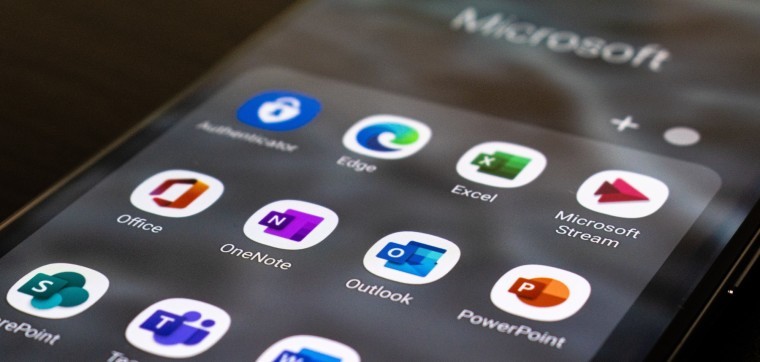
10. Hyper-Personalization
Hyper-personalization will be a key focus in mobile app development in 2024, with apps leveraging user data and AI algorithms to deliver tailored experiences. From personalized content recommendations to customized user interfaces, mobile apps will strive to create individualized experiences that resonate with users on a deeper level.
Hyper-personalization is a cutting-edge approach to delivering tailored and individualized experiences to users based on their preferences, behaviours, and interests. Unlike traditional personalization techniques that rely on basic demographic data, hyper-personalization leverages advanced data analytics, machine learning algorithms, and real-time data to deliver highly targeted and relevant content to each user.
One of the key benefits of hyper-personalization is its ability to create deeper and more meaningful connections with users by delivering content and experiences that resonate with their unique needs and preferences. By analyzing vast amounts of data, including past interactions, browsing history, purchase behaviour, and social media activity, hyper-personalization enables businesses to understand each user’s preferences and deliver personalized recommendations, product suggestions, and promotional offers in real-time.
Moreover, hyper-personalization goes beyond simple recommendations to offer dynamic and contextually relevant experiences across all touchpoints and channels. Whether it’s a personalized email, a customized website experience, or a targeted mobile notification, hyper-personalization ensures that each interaction with the user feels tailored and relevant, increasing engagement, satisfaction, and loyalty.
Furthermore, hyper-personalization enables businesses to optimize their marketing efforts and drive greater conversion rates by delivering the right message to the right user at the right time. By analyzing user data and behavior patterns, businesses can identify key moments in the customer journey and deliver personalized messages and offers that are most likely to resonate and drive action.
In addition to improving customer engagement and conversion rates, hyper-personalization also offers benefits for businesses in terms of efficiency and cost-effectiveness. By automating the process of analyzing data and delivering personalized content, businesses can streamline their marketing efforts and reduce the need for manual intervention, saving time and resources while maximizing the impact of their campaigns.
However, businesses need to strike the right balance between personalization and privacy to avoid alienating users or infringing on their rights. Transparency and consent are key principles of ethical hyper-personalization, and businesses must ensure that they are collecting and using data responsibly and in accordance with relevant regulations and best practices.


